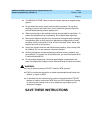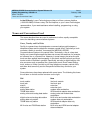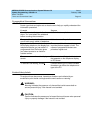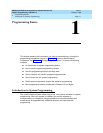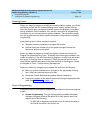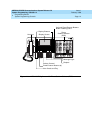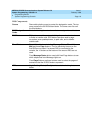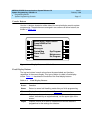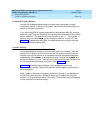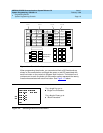
MERLIN LEGEND Communications System Release 6.0
System Programming
555-660-111
Issue 1
February 1998
Programming Basics
Page 1-2Introduction to System Programming
1
Planning Forms 1
Before you begin to program or modify your communications system, you should
familiarize yourself with the system planning forms. Initially, system planning
forms are used to plan your communications system and program your system
during installation. After installation, they remain a source for all programming
information on your communications system database. The information ranges
from the system time and date to specific equipment configurations and feature
programming.
Each planning form is either required or optional:
■ Required forms are necessary to program the system.
■ Optional forms are needed only if the system manager included the
features or options on the forms.
Before you begin to program or modify your system, review the Control Unit
Diagram on system planning Form 1 to identify the module types installed in the
system’s control unit. Use this information to program or modify lines and trunks
and assign or reassign lines to extensions. Check the physical control unit to
verify that the modules are placed in the slots identified on the diagram. Correct
the diagram on Form 1 if there are any discrepancies.
Before you make any changes to your system, be sure to do the following:
■ Mark any system modifications or changes on the appropriate planning
form. Keep your planning forms up to date.
■ Check the
Feature Reference
for possible feature interactions.
■ Program the system or the system component during the appropriate idle
state. See “Idle States” on page 1–46
.
Types of Programming 1
Listed below are the three types of programming available for the communications
system.
■ System Programming. This type of programming enables the system
manager to program features that affect all or most system users, and
requires one of the following:
— An MLX-20L
telephone connected to one of the first five jacks of
the first MLX module in the control unit.



